AP AH Renaissance
0.0(0)
0.0(0)
New
Card Sorting
1/28
Earn XP
Description and Tags
Study Analytics
Name | Mastery | Learn | Test | Matching | Spaced |
|---|
No study sessions yet.
29 Terms
1
New cards
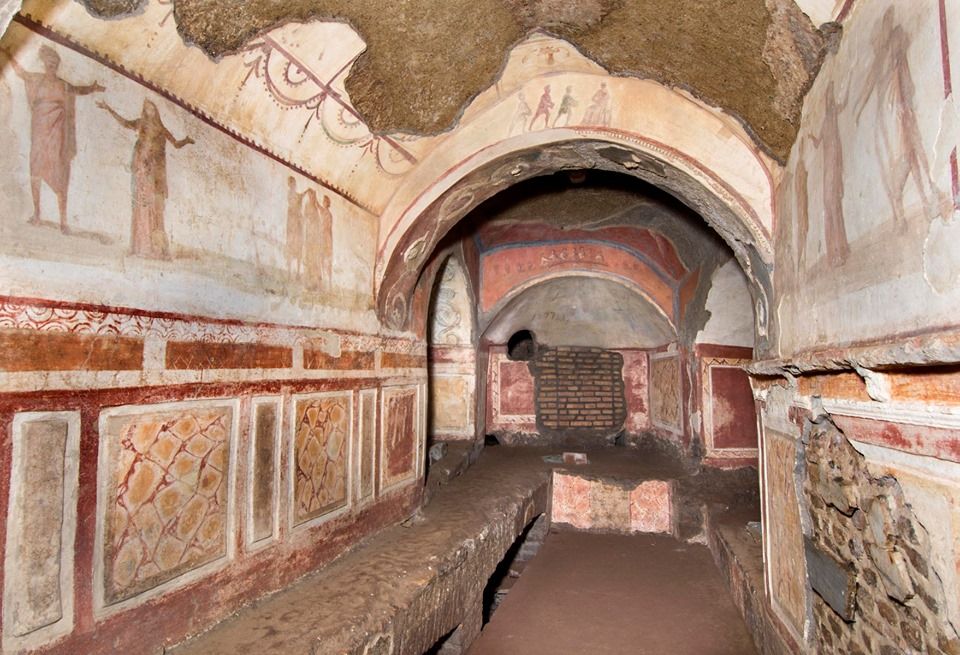
Catacombs of Priscilla
ca. 200-400 CE
Rome
* scenes related to Christianity
* tombs for Christians in Rome
* Christianity was not popular at the time
Rome
* scenes related to Christianity
* tombs for Christians in Rome
* Christianity was not popular at the time
2
New cards
Basilica of Santa Sabina
Rome
ca 432 CE
* Features an apse, columns on inside to shape the nave, clerestory
* Christians needed to adapt their churches for their needs.
* Previous roman churches held services outside but Christian churches were held inside.
ca 432 CE
* Features an apse, columns on inside to shape the nave, clerestory
* Christians needed to adapt their churches for their needs.
* Previous roman churches held services outside but Christian churches were held inside.
3
New cards
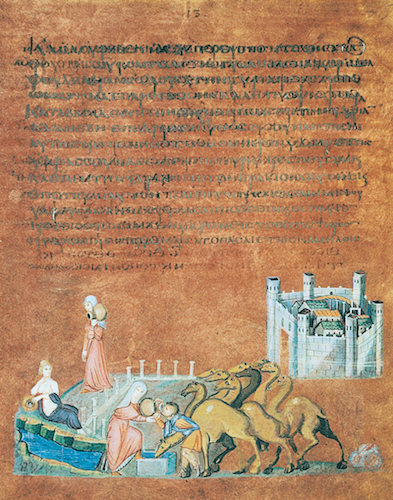
Vienna Genesis - Rebecca at the Well
early 6th century
tempera, gold, and silver on purple vellum
* Writing done in molten silver
* velum was originally purple - very expensive dye
* the naked woman is the personification of the river
* these types of books were extremely expensive to make
* continuous narration: same character appears within the same page/frame to show movement
* Anachronism: the city in the background doesn’t fit within the time frame
tempera, gold, and silver on purple vellum
* Writing done in molten silver
* velum was originally purple - very expensive dye
* the naked woman is the personification of the river
* these types of books were extremely expensive to make
* continuous narration: same character appears within the same page/frame to show movement
* Anachronism: the city in the background doesn’t fit within the time frame
4
New cards
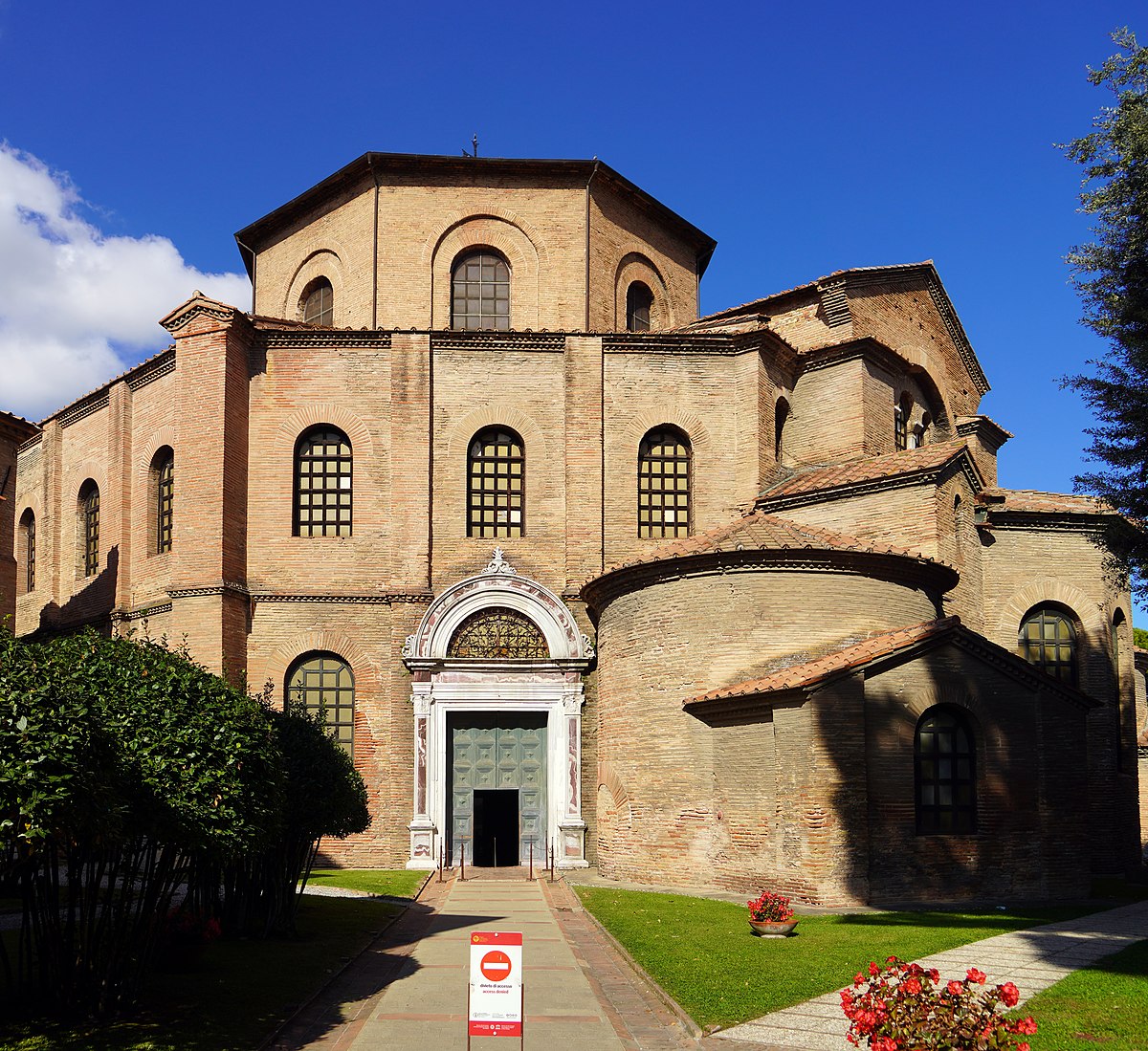
Church of San Vitale
Ravenna, Italy
526-547
* circular/central plan
* top dome is a clerestory
* inside is decorated with colorful paintings or arches
* apse has a mosiac that uses real gold and different colored stones/glass/pearls
* early churches were plain on the outside
526-547
* circular/central plan
* top dome is a clerestory
* inside is decorated with colorful paintings or arches
* apse has a mosiac that uses real gold and different colored stones/glass/pearls
* early churches were plain on the outside
5
New cards
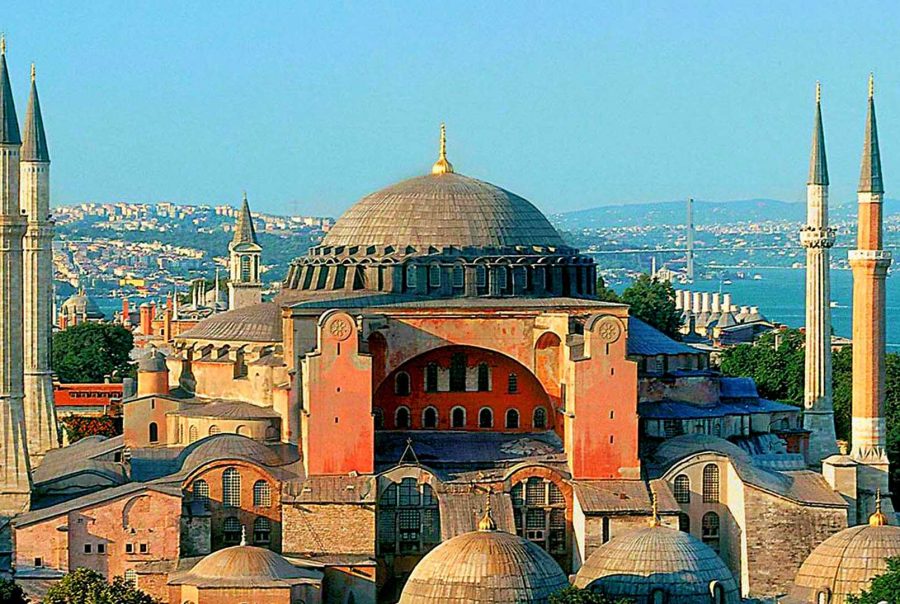
Church of Hagia Sophia (Holy Wisdom)
Isodorus of Miletus and Anthemius of Tralles
Istanbul (Byzantium)
532-537
* Funded by Emperor Justinian
* held a contest for best architects in his empire
* dome, windows on bottom w/ thin verticle supports
* dome was revolutionary at the time; slightly smaller than the dome of Pantheon
* 1453: Converted into a mosque
* 1935: Deconsecrated as a religious building, became a museum
* 2018: Reconsecreated as a mosque
Istanbul (Byzantium)
532-537
* Funded by Emperor Justinian
* held a contest for best architects in his empire
* dome, windows on bottom w/ thin verticle supports
* dome was revolutionary at the time; slightly smaller than the dome of Pantheon
* 1453: Converted into a mosque
* 1935: Deconsecrated as a religious building, became a museum
* 2018: Reconsecreated as a mosque
6
New cards
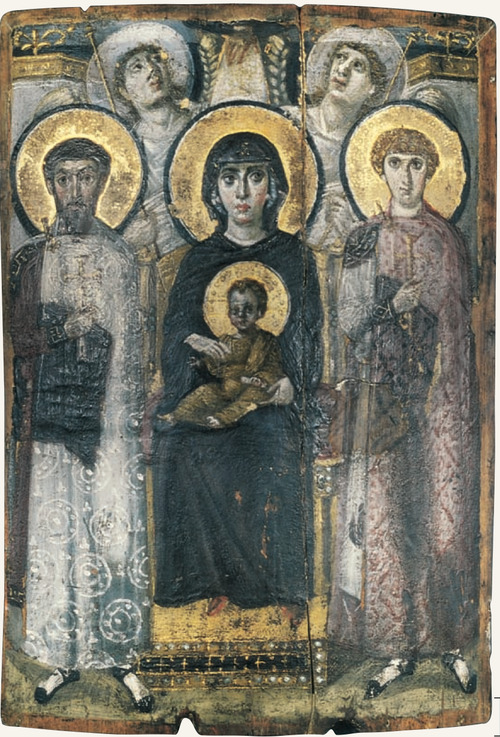
Virgin and Child between Saints
* encaustic on wood
* sixth or seventh century
* from Saint Catherine’s Monastary
* Mount Sinai, Egypt
* Melted beeswax w/ paint (tempura)
* Hand of god reaching down (top of painting)
* sixth or seventh century
* from Saint Catherine’s Monastary
* Mount Sinai, Egypt
* Melted beeswax w/ paint (tempura)
* Hand of god reaching down (top of painting)
7
New cards
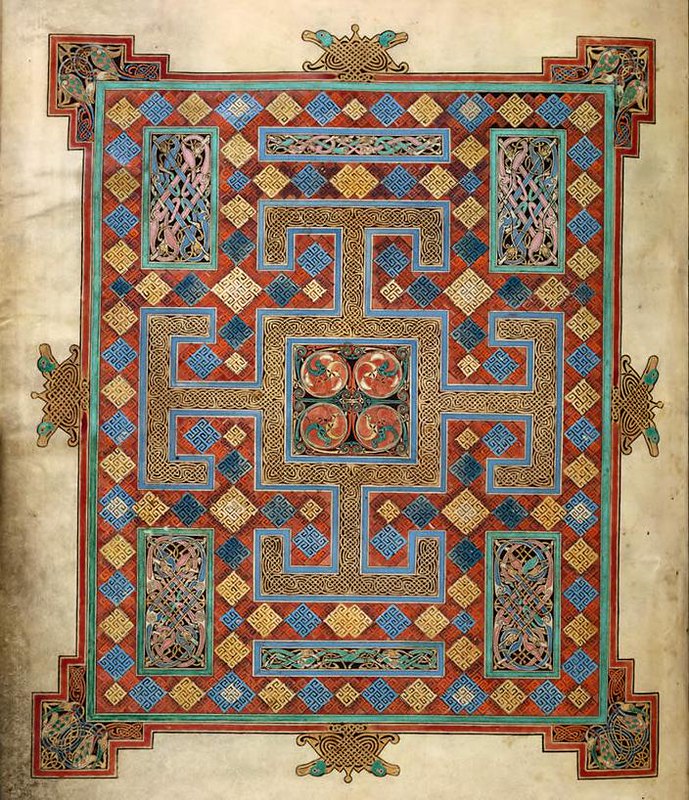
Lindisfarne Gospels
* England
* ca. 700 (early medieval)
* tempera on vellum
* “Carpet” pages
* some pages w/illustrations in between chapters
* features four books in the New Testament
* Carpet design influenced by Middle Eastern carpets/art
* Patterns were time-consuming and complex
* paintings these was an exercise in intense focus
* ca. 700 (early medieval)
* tempera on vellum
* “Carpet” pages
* some pages w/illustrations in between chapters
* features four books in the New Testament
* Carpet design influenced by Middle Eastern carpets/art
* Patterns were time-consuming and complex
* paintings these was an exercise in intense focus
8
New cards
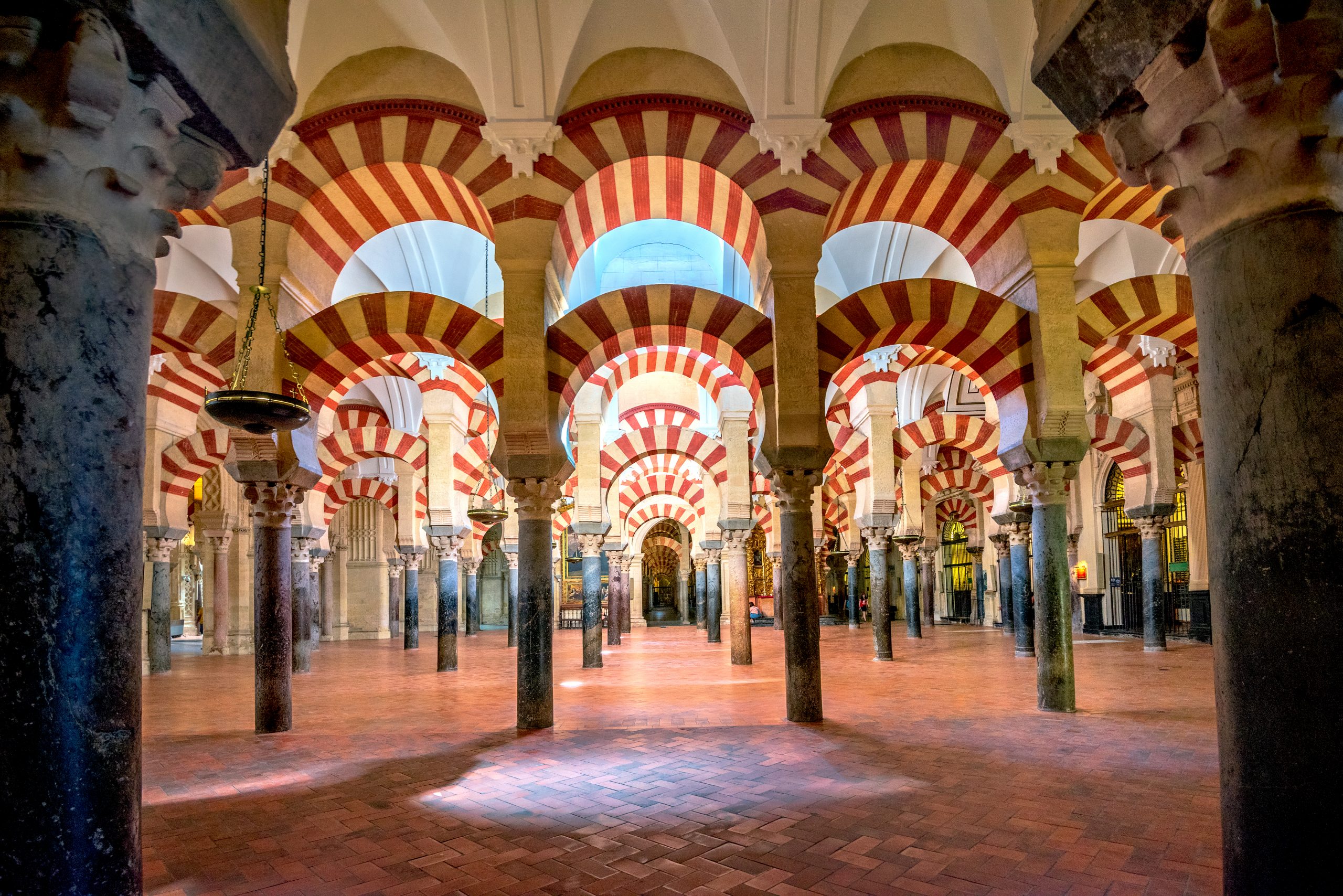
The Great Mosque of Cordoba
* spain
* 9th and 10th century
* filled w/ columns, fountain, orange grove, symmetrical arches, stone and red brick
* characteristics of western islamic architecture
* 9th and 10th century
* filled w/ columns, fountain, orange grove, symmetrical arches, stone and red brick
* characteristics of western islamic architecture
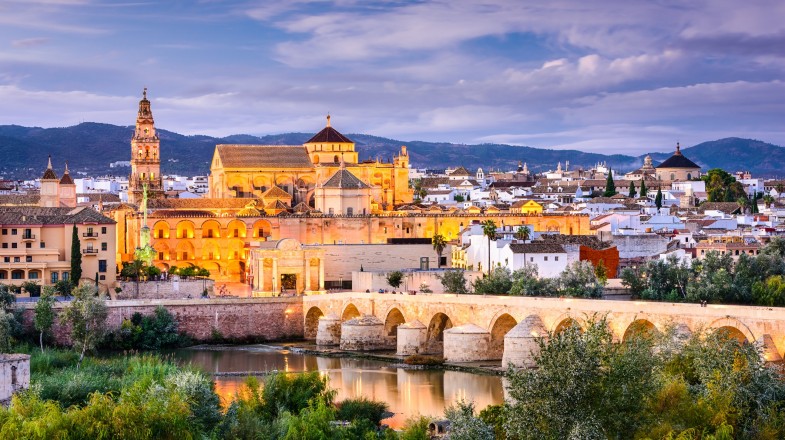
9
New cards
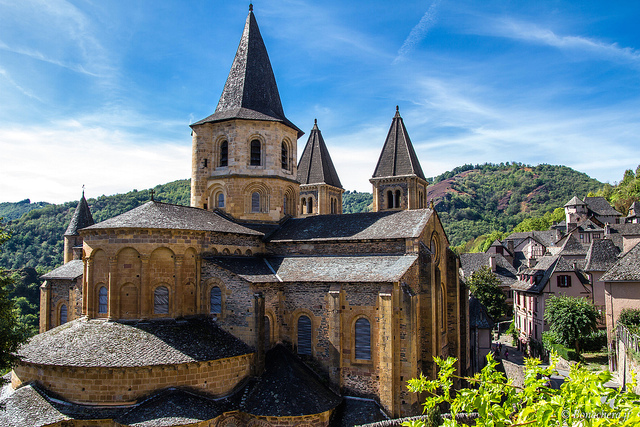
Church of Saint-Foy
* Conques, France
* c. 1060 - 1130
* Medieval Romanesque
* **Features Last Judgement Tympanum and Reliquary Statue of Saint-Foy**
* c. 1060 - 1130
* Medieval Romanesque
* **Features Last Judgement Tympanum and Reliquary Statue of Saint-Foy**
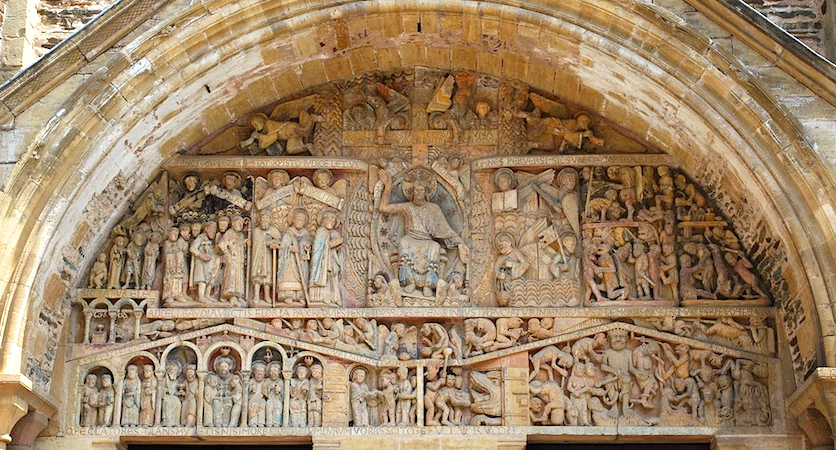
10
New cards
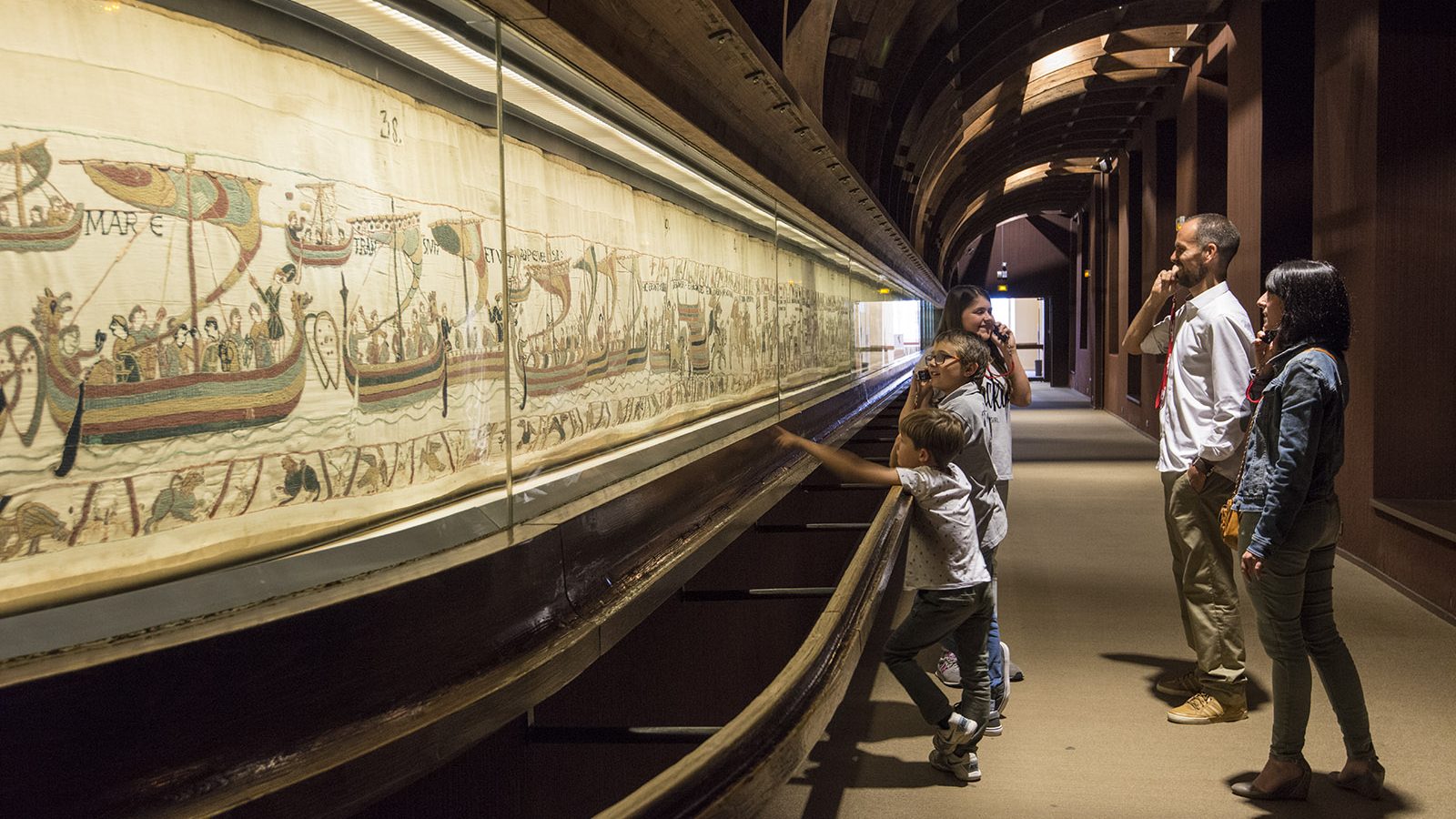
Bayeux Tapestry
* c. 1070
* 230 ft x 20 in high
* Embroidered wool on linen
* continuous narrative with text
* Made entirely by women as sewing was exclusively done by women
* Scenes of Norman invasion of Britain
* 230 ft x 20 in high
* Embroidered wool on linen
* continuous narrative with text
* Made entirely by women as sewing was exclusively done by women
* Scenes of Norman invasion of Britain
11
New cards
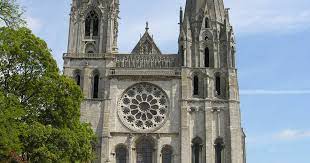
Chartres Cathedral
* Chartres, France
* c. 1145 - 1155 CE
* Reconstructed c. 1194-1220 CE after a large fire
* Limestone and stained glass
* Jamb figures near entrance
* pointed arches
* utilizes old and new gothic styles
* houses Virgin Mary’s Tunic
* c. 1145 - 1155 CE
* Reconstructed c. 1194-1220 CE after a large fire
* Limestone and stained glass
* Jamb figures near entrance
* pointed arches
* utilizes old and new gothic styles
* houses Virgin Mary’s Tunic
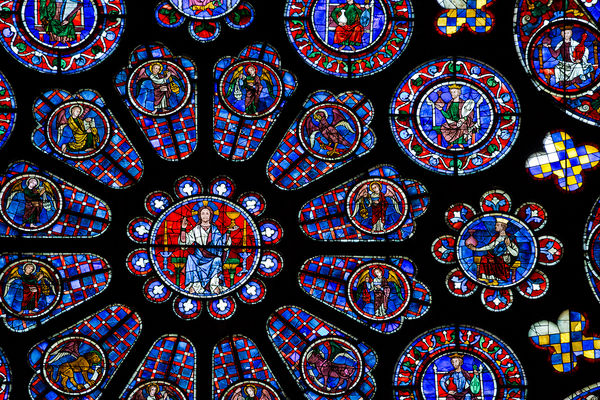
12
New cards
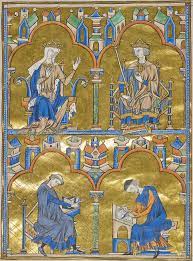
Moralized Bible of Saint Luis
Blanche of Castile and King Louis IX of France
Blanche of Castile and King Louis IX of France
* France
* c. 1230
* Medieval Period
* Abstract architecture in background
* Moralized Bible: a medieval Bible w/ many more illustrations than others sacred books; included commentary
* c. 1230
* Medieval Period
* Abstract architecture in background
* Moralized Bible: a medieval Bible w/ many more illustrations than others sacred books; included commentary
13
New cards
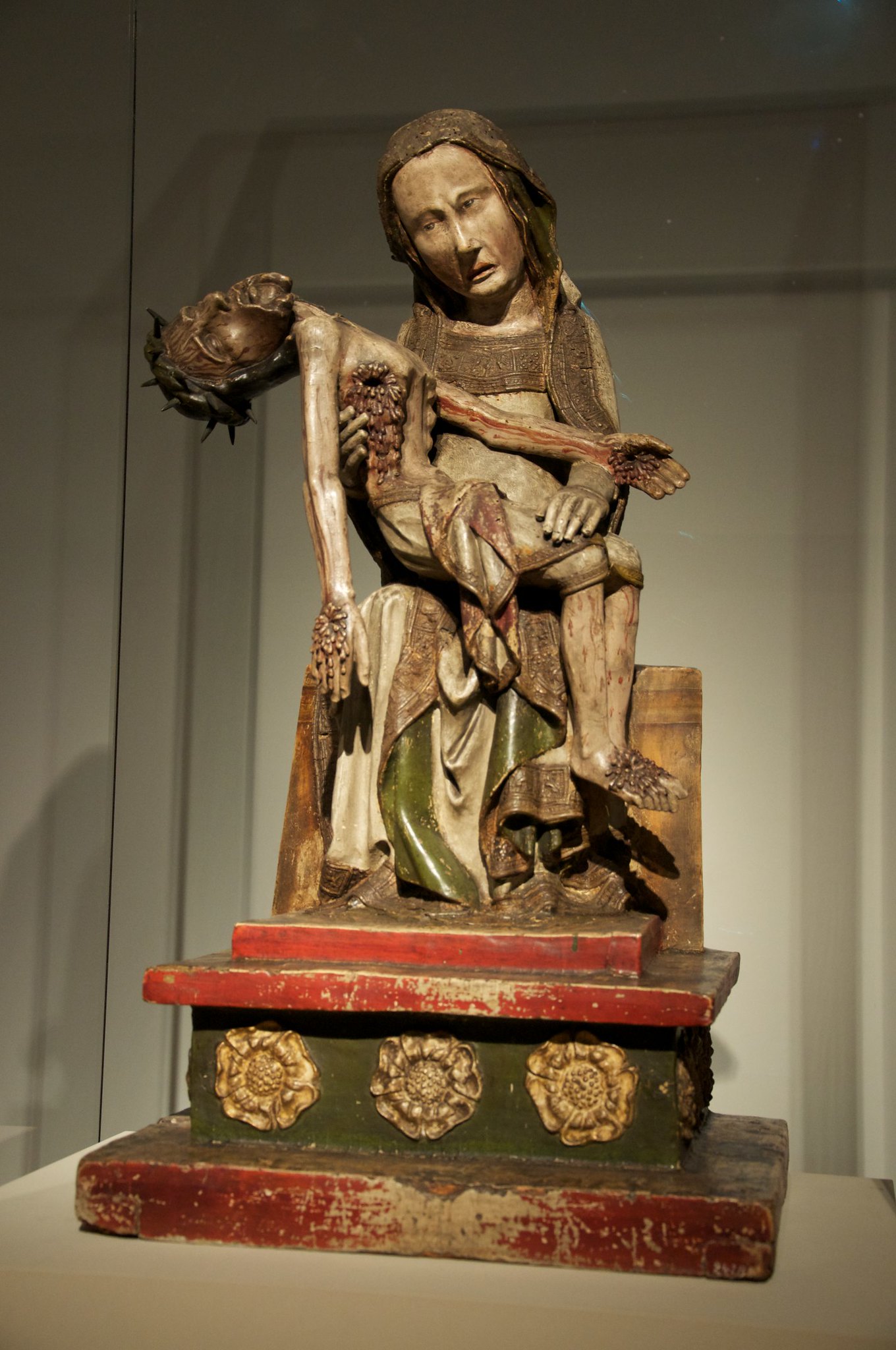
Rottgen Pieta
* C. 1300 - 25
* Painted Wood
* Pieta: a picture or sculpture of the Virgin Mary holding the dead body of Jesus on her lap or in her arms
* Northern artists focused on intense emotion and gore in order to inspire faith and piety in viewers
* Painted Wood
* Pieta: a picture or sculpture of the Virgin Mary holding the dead body of Jesus on her lap or in her arms
* Northern artists focused on intense emotion and gore in order to inspire faith and piety in viewers
14
New cards
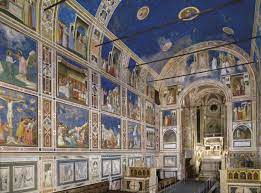
Arena (Scrovegni) Chapel
* Architect: Giotto
* c. 1305
* Fresco
* Frescos inside tell biblical stories
* Depictions of those going to hell and heaven
* Commissioned by a wealthy man
* Much of Europe was illiterate, art helped tell biblical stories
* Called Arena Chapel bc it is on the site of an ancient Roman arena/amphitheater
* Doing commissioned art for churches was seen as a way to get into heaven
* c. 1305
* Fresco
* Frescos inside tell biblical stories
* Depictions of those going to hell and heaven
* Commissioned by a wealthy man
* Much of Europe was illiterate, art helped tell biblical stories
* Called Arena Chapel bc it is on the site of an ancient Roman arena/amphitheater
* Doing commissioned art for churches was seen as a way to get into heaven
15
New cards
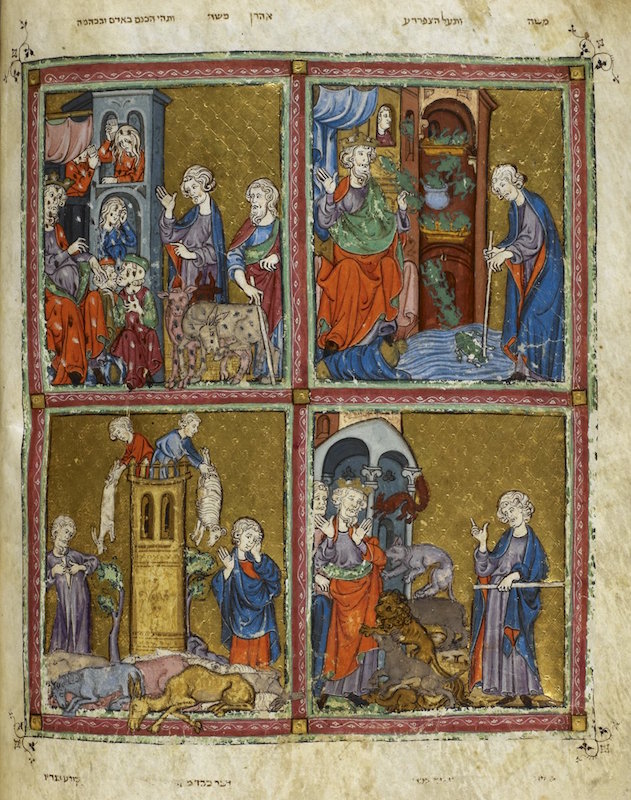
Golden Haggadah
* C. 1320
* Northern Spain
* Scenes related to Passover
* Scenes related to Passover; plaques and escape of Hebrews from Egypt
* Haggadah: A text used in the Jewish faith, especially during the rituals around the Passover holiday
* At the time this was made, there was a large Jewish community in Spain
* Some of the wealthiest people were Jewish - they could afford to make these expensive books
* Anachronism: Figures look too much like contemporary people, not accurate to the time period
* Northern Spain
* Scenes related to Passover
* Scenes related to Passover; plaques and escape of Hebrews from Egypt
* Haggadah: A text used in the Jewish faith, especially during the rituals around the Passover holiday
* At the time this was made, there was a large Jewish community in Spain
* Some of the wealthiest people were Jewish - they could afford to make these expensive books
* Anachronism: Figures look too much like contemporary people, not accurate to the time period
16
New cards
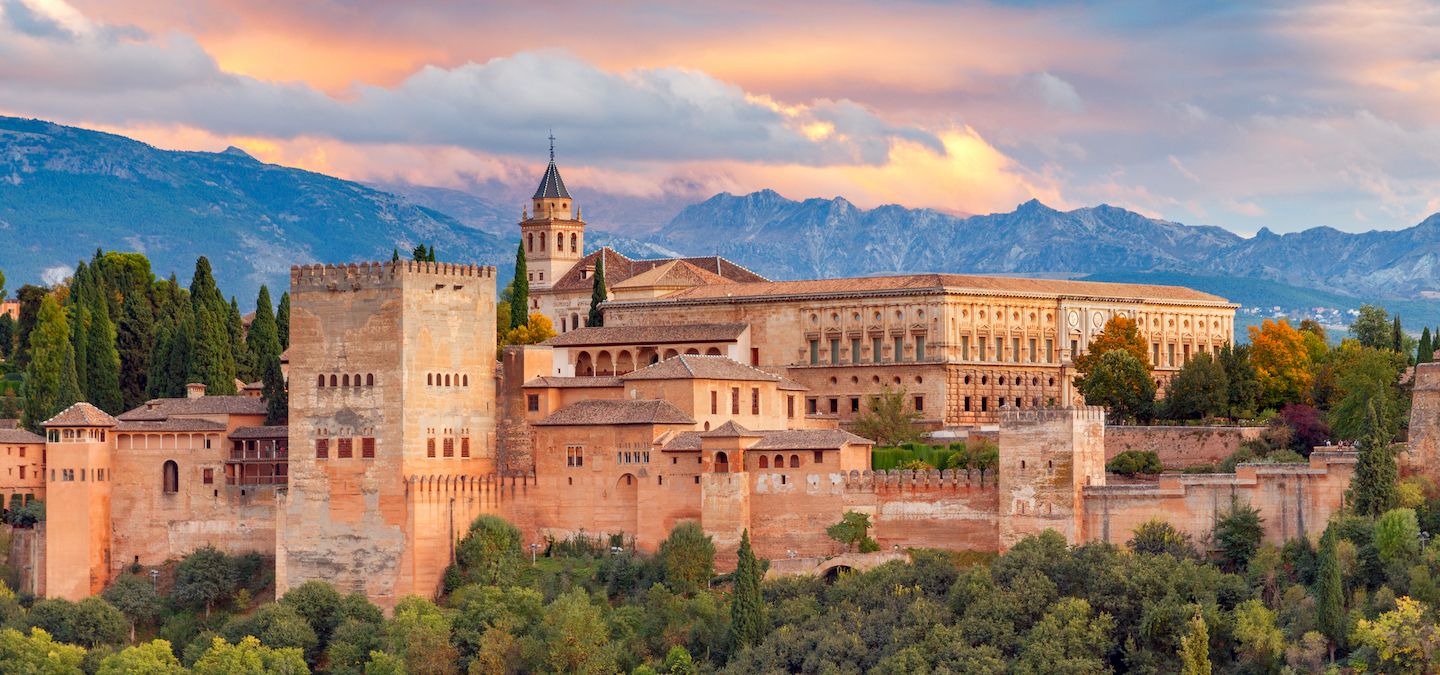
The Alhambra
* 1391-1354
* Nasrid Dynasty
* Granada, Spain
* Multiple buildings connected by paths, gardens, and gates
* ornate interiors
* 4 palaces
* Brightly colored facade
* double arched windows
* Some of the rooms were used to host visitors
* Some rooms were used as residential apartments
* Nasrid Dynasty
* Granada, Spain
* Multiple buildings connected by paths, gardens, and gates
* ornate interiors
* 4 palaces
* Brightly colored facade
* double arched windows
* Some of the rooms were used to host visitors
* Some rooms were used as residential apartments
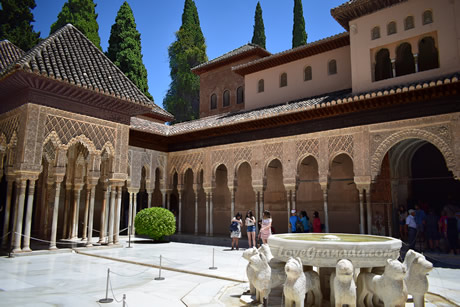
17
New cards
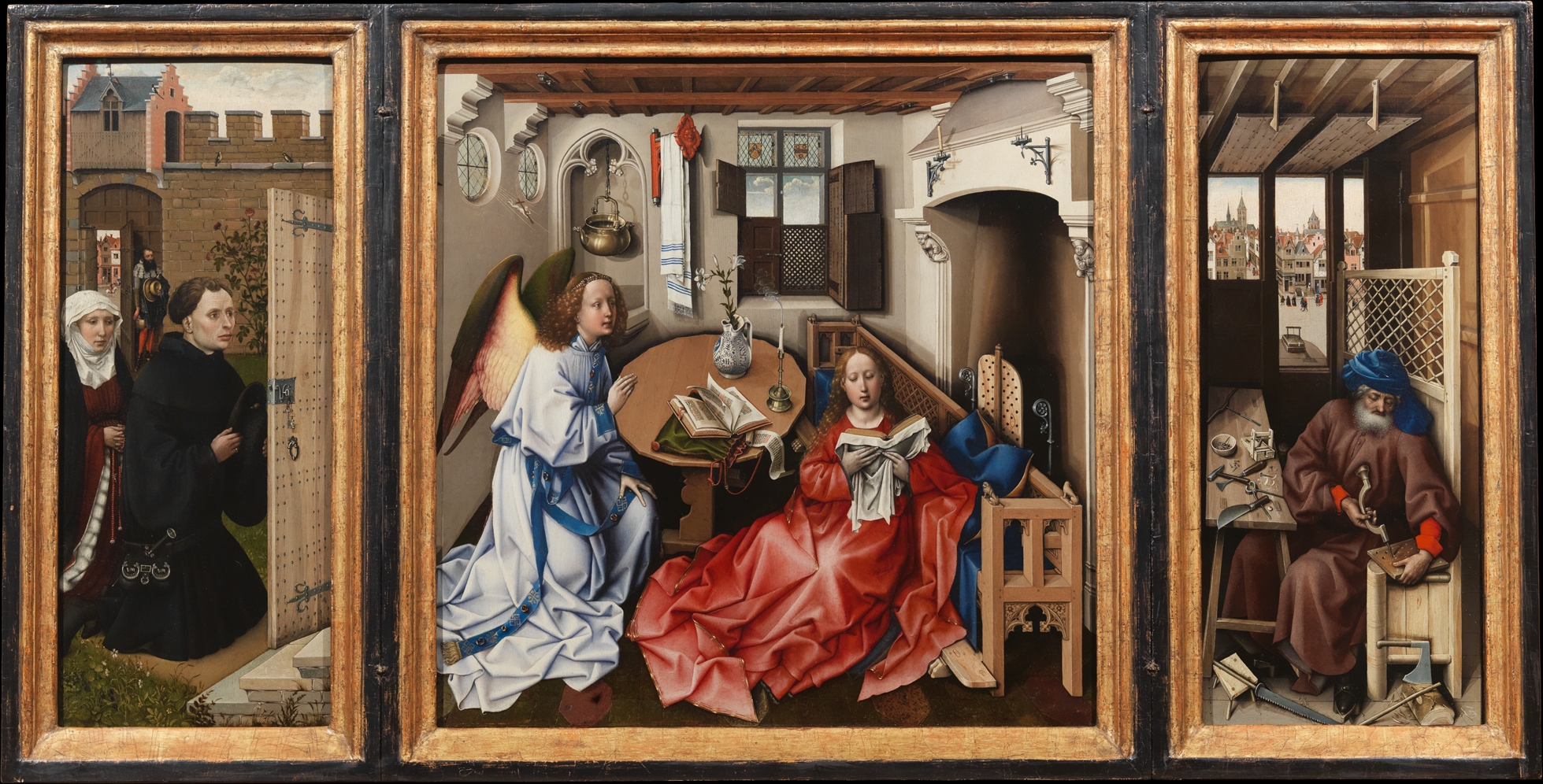
Annunciation Triptych
* workshop of Robert Campin
* 1425-1428
* Tempera and oil on panel
* Triptych that could be open and closed
* Patrons of the artwork are featured on left panel
* Lots of symbolism such as white flower that represents purity of Mary
* \
* 1425-1428
* Tempera and oil on panel
* Triptych that could be open and closed
* Patrons of the artwork are featured on left panel
* Lots of symbolism such as white flower that represents purity of Mary
* \
18
New cards
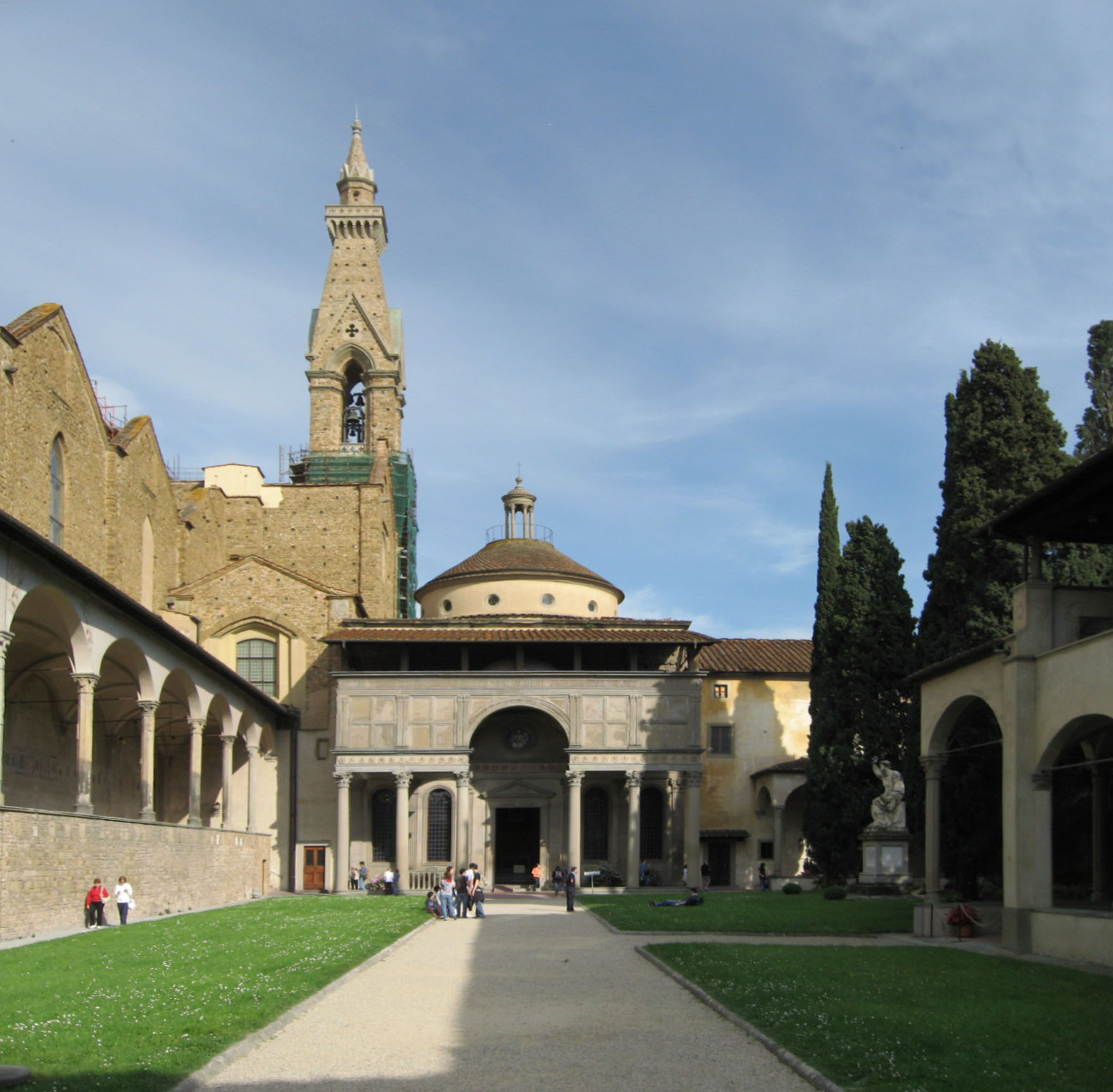
Pazzi Chapel
* Filippo Brunelleschi
* Florence, Italy
* Began in 1420s completed 1460s
* Built in between other buildings
* facade of chapel inspired by Roman arches
* Features a dome that was inspired by Pantheon and Hagia Sophia
* Commissioned by Pazzi Chapel
* Florence, Italy
* Began in 1420s completed 1460s
* Built in between other buildings
* facade of chapel inspired by Roman arches
* Features a dome that was inspired by Pantheon and Hagia Sophia
* Commissioned by Pazzi Chapel
19
New cards
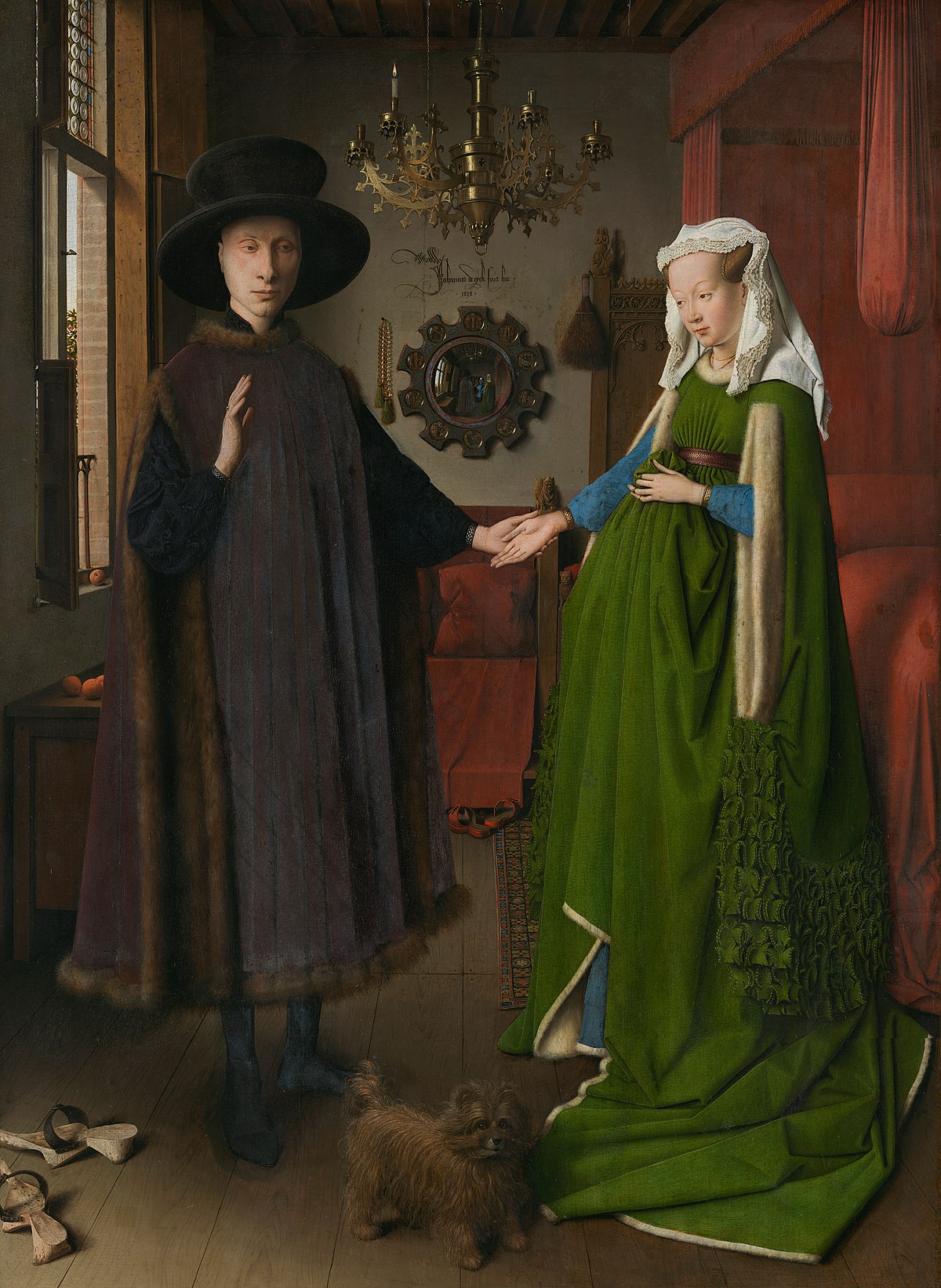
The Arnolfini Portrait
* Jan Van Eyck
* 1434
* Tempera and oil on wood panel
* Man’s clothes are dark purple/black
* Black clothes were dyed with purple multiple times
* Shows wealth
* Dog is a symbol of faith between husband and wife
* 1434
* Tempera and oil on wood panel
* Man’s clothes are dark purple/black
* Black clothes were dyed with purple multiple times
* Shows wealth
* Dog is a symbol of faith between husband and wife
20
New cards
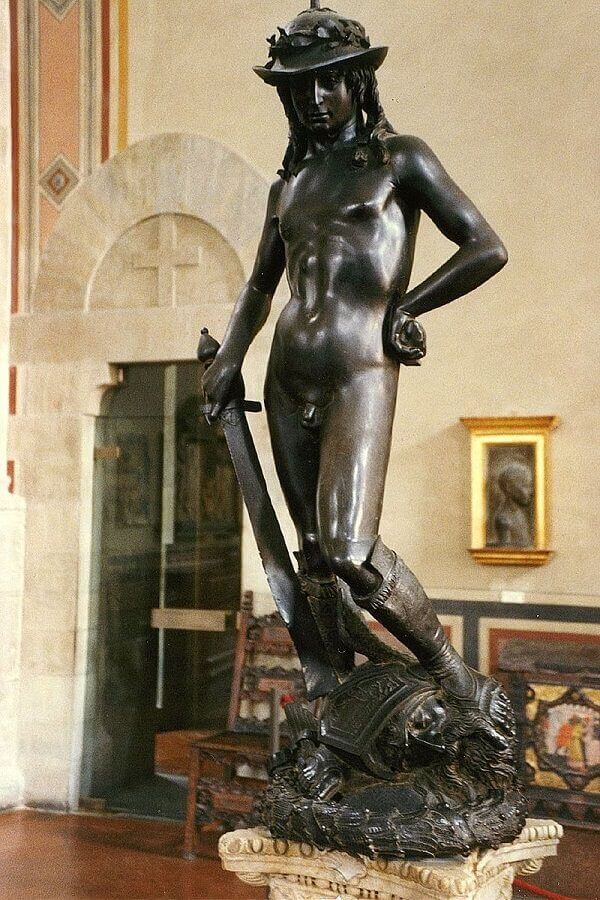
David
* Donatello
* Bronze
* Late 1420s to 1460s
* David is shown stepping over Goliath’s head
* Goliath’s beard - that shows his age/maturity - juxtaposes David’s youthfulness
* David looks androgynous
* 5.5 - 6 ft tall
* Return to classical
* Contrapposto pose
* Nudity (to show vulnerability
* first full length freestanding bronze statue since the fall of Rome
* Commissioned by Medici family - richest family in Florence
* Bronze
* Late 1420s to 1460s
* David is shown stepping over Goliath’s head
* Goliath’s beard - that shows his age/maturity - juxtaposes David’s youthfulness
* David looks androgynous
* 5.5 - 6 ft tall
* Return to classical
* Contrapposto pose
* Nudity (to show vulnerability
* first full length freestanding bronze statue since the fall of Rome
* Commissioned by Medici family - richest family in Florence
21
New cards
Madonna and Child w/ Two Angels
* Fra Filippo Lippi
* c. 1445 - 1460
* Tempera on wood
* No halos to make Mary and Jesus more huma
* Foreshortening to give the painting 3 dimensionality
* More naturalistic than pr3evious depictions from medieval period
* Image of Mary was based on nun who Lippi had an affairt with and angel is based on his son
* c. 1445 - 1460
* Tempera on wood
* No halos to make Mary and Jesus more huma
* Foreshortening to give the painting 3 dimensionality
* More naturalistic than pr3evious depictions from medieval period
* Image of Mary was based on nun who Lippi had an affairt with and angel is based on his son
22
New cards
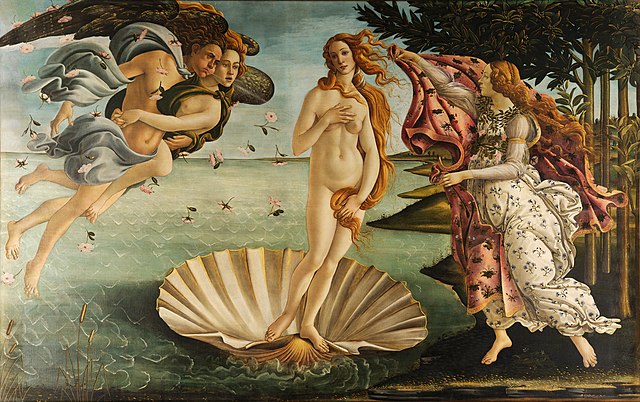
The Birth of Venus
* Sandro Botticelli
* ca 1482
* Tempera on panel
* rare nudity of a woman
* personification
* Two figures on the left are wind
* Right figure is a season
* ca 1482
* Tempera on panel
* rare nudity of a woman
* personification
* Two figures on the left are wind
* Right figure is a season
23
New cards
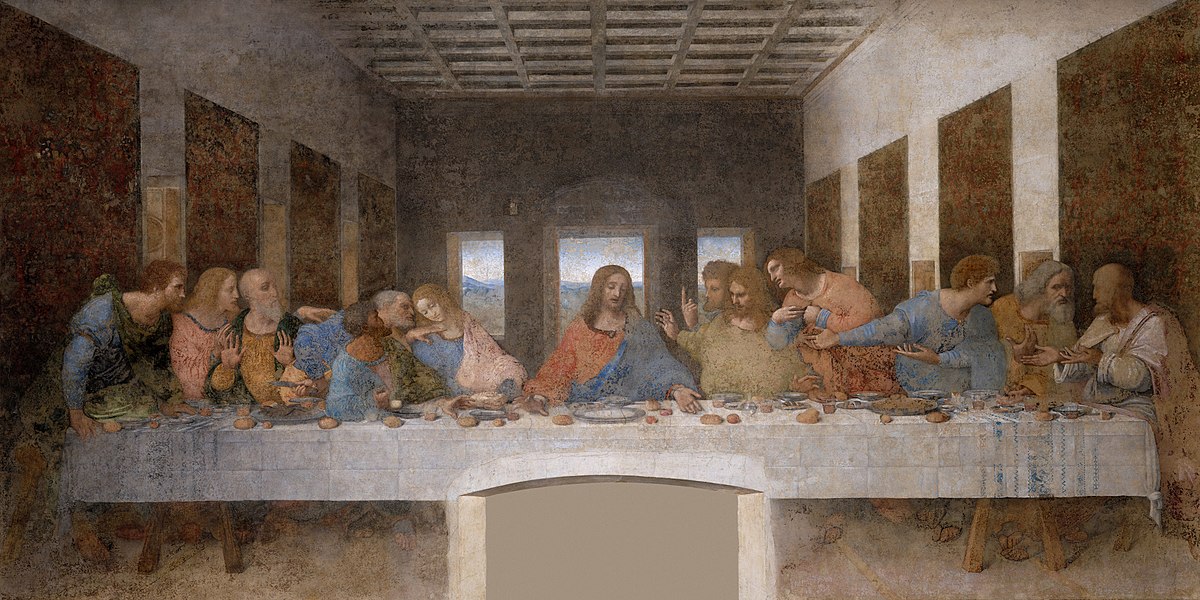
Last Supper
* Leonardo Da Vinci
* Oil, tempera, fresco
* 1495-98
* Scene of last supper before crucifiction
* Oringinally in a convents dining room in a church
* Leonardo experimented by painting on dry plaster
* As a result the color didnt bond with the wall and the painting has faded over the years
* Oil, tempera, fresco
* 1495-98
* Scene of last supper before crucifiction
* Oringinally in a convents dining room in a church
* Leonardo experimented by painting on dry plaster
* As a result the color didnt bond with the wall and the painting has faded over the years
24
New cards
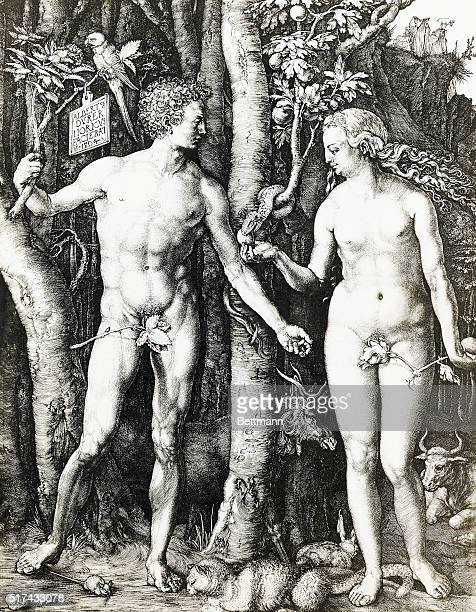
Adam and Eve
* Albrecht Durer
* 1504
* Engraving
* Northern Renaissance
* crosshatching
* lots of animals throughout scene
* \
* 1504
* Engraving
* Northern Renaissance
* crosshatching
* lots of animals throughout scene
* \
25
New cards
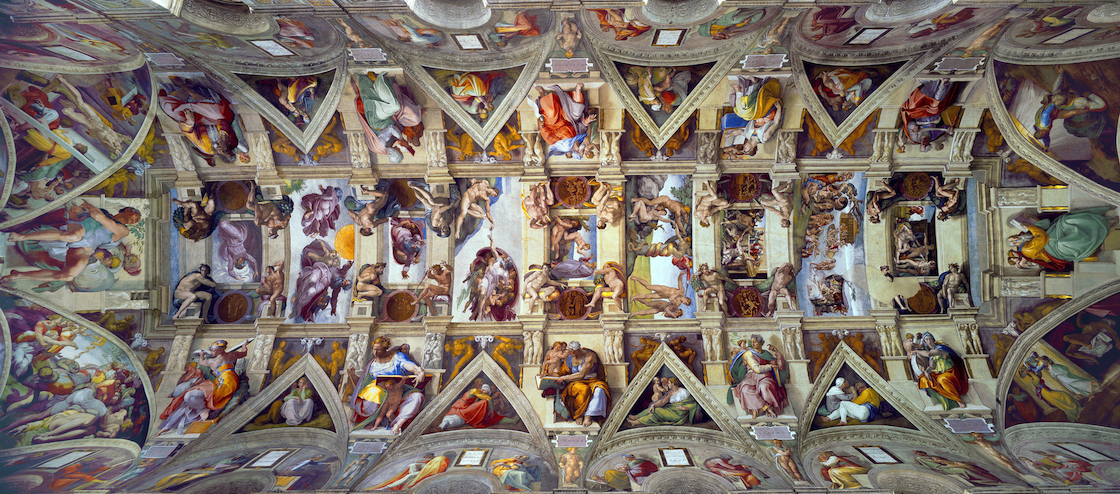
Ceiling of Sistine Chapel
* Michelangelo
* Vatican City, Rome
* 1508-12
* Fresco
* Pieces of architecutre are actually painted on
* Michelangelo used male models even for women - everyone is buff!
* \
* Vatican City, Rome
* 1508-12
* Fresco
* Pieces of architecutre are actually painted on
* Michelangelo used male models even for women - everyone is buff!
* \
26
New cards
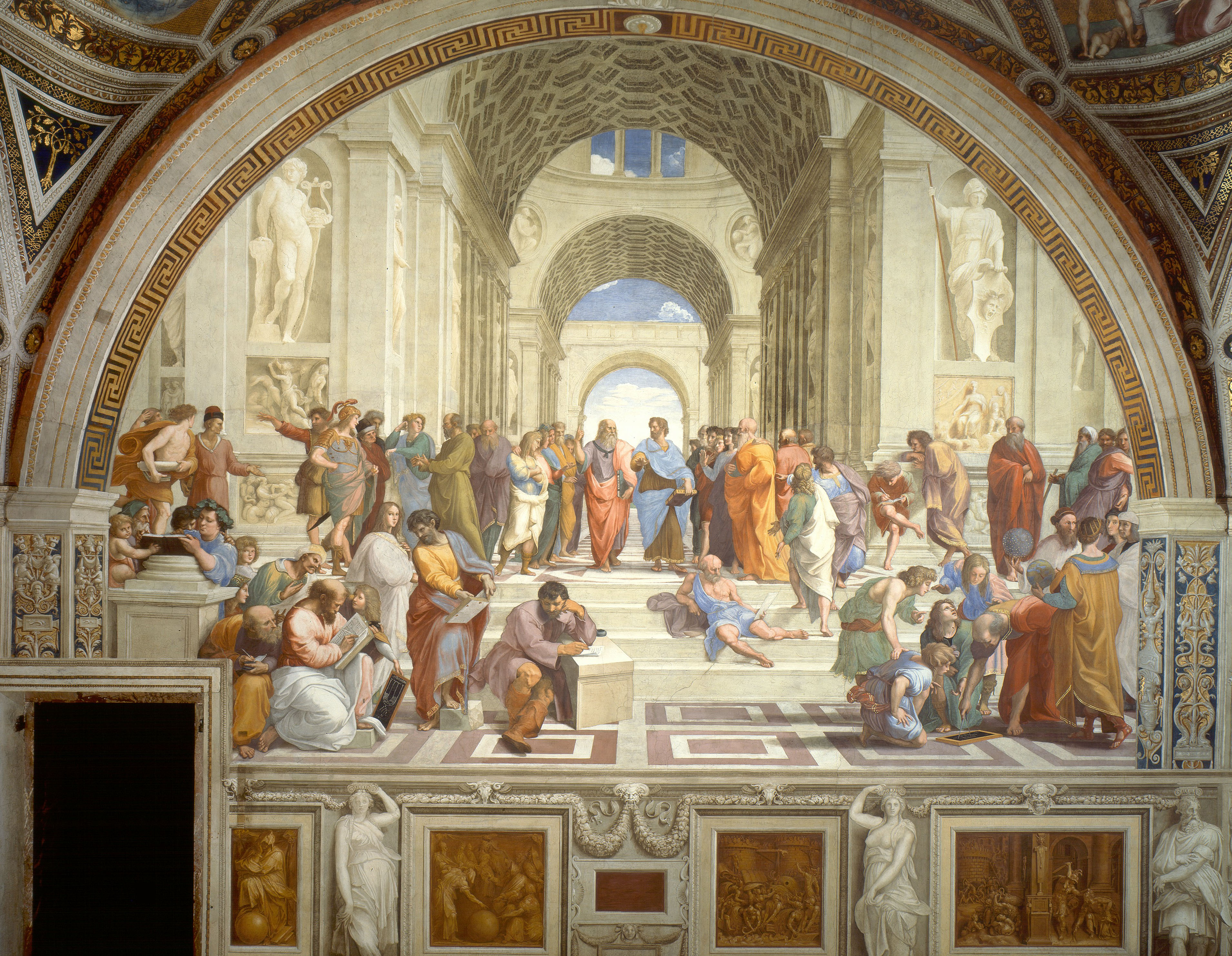
School of Athens
* Raphael
* Fresco
* 1509 - 1511
* High Renaissance
* painting features important figures from Ancient Greece
* statues of greek/roman gods feautred
* arches
* in the center are Plato and Aristotle
* Direct observation of nature
* \
* Fresco
* 1509 - 1511
* High Renaissance
* painting features important figures from Ancient Greece
* statues of greek/roman gods feautred
* arches
* in the center are Plato and Aristotle
* Direct observation of nature
* \
27
New cards
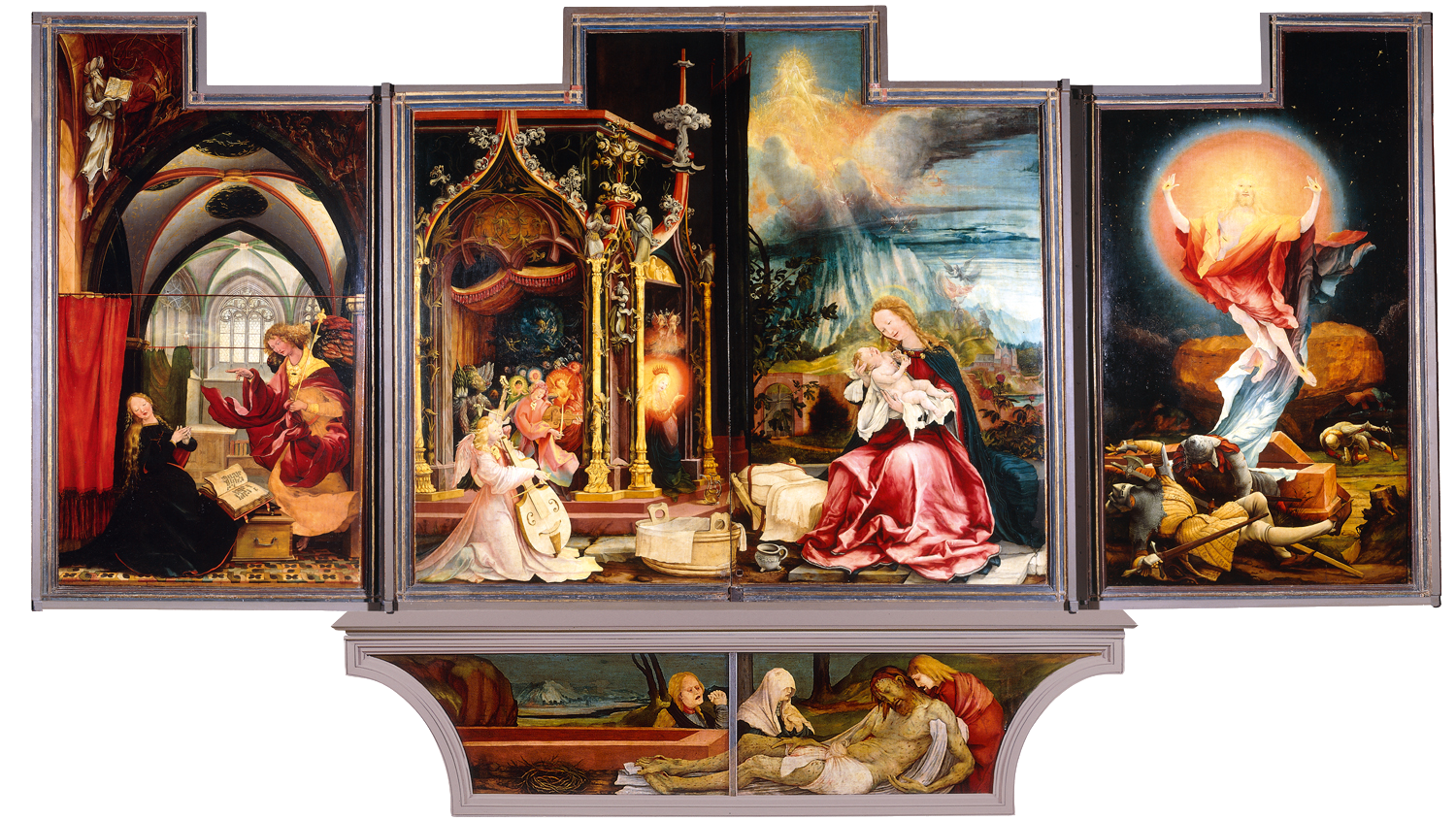
Isenheim Alterpiece
* Matthias Grunewald
* c. 1510-15
* Oil on Wood
* Northern Renaissance
* Triptych
* Scenes of crucificion
* surrounded by mary, mary magelene, and one of the apostoles
* panels show different saints
* bottom panel shows the lamentation
* function: to educate people who could mpot read and inspire feelings of piety
* c. 1510-15
* Oil on Wood
* Northern Renaissance
* Triptych
* Scenes of crucificion
* surrounded by mary, mary magelene, and one of the apostoles
* panels show different saints
* bottom panel shows the lamentation
* function: to educate people who could mpot read and inspire feelings of piety
28
New cards
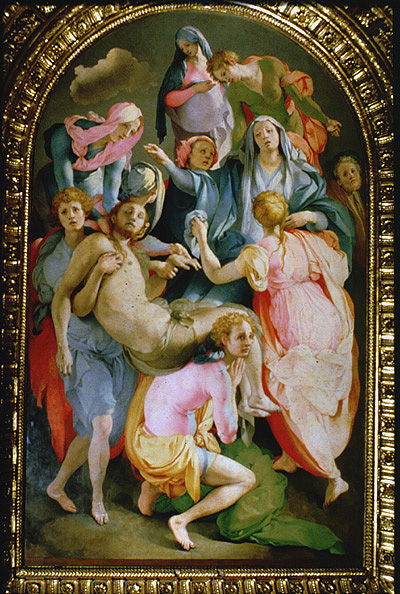
Entombent
* 1525-28
* tempera on panel
* mannerism
* ambigiouty about what is going on
* pastel color palette
* in a small chapel
* tempera on panel
* mannerism
* ambigiouty about what is going on
* pastel color palette
* in a small chapel
29
New cards
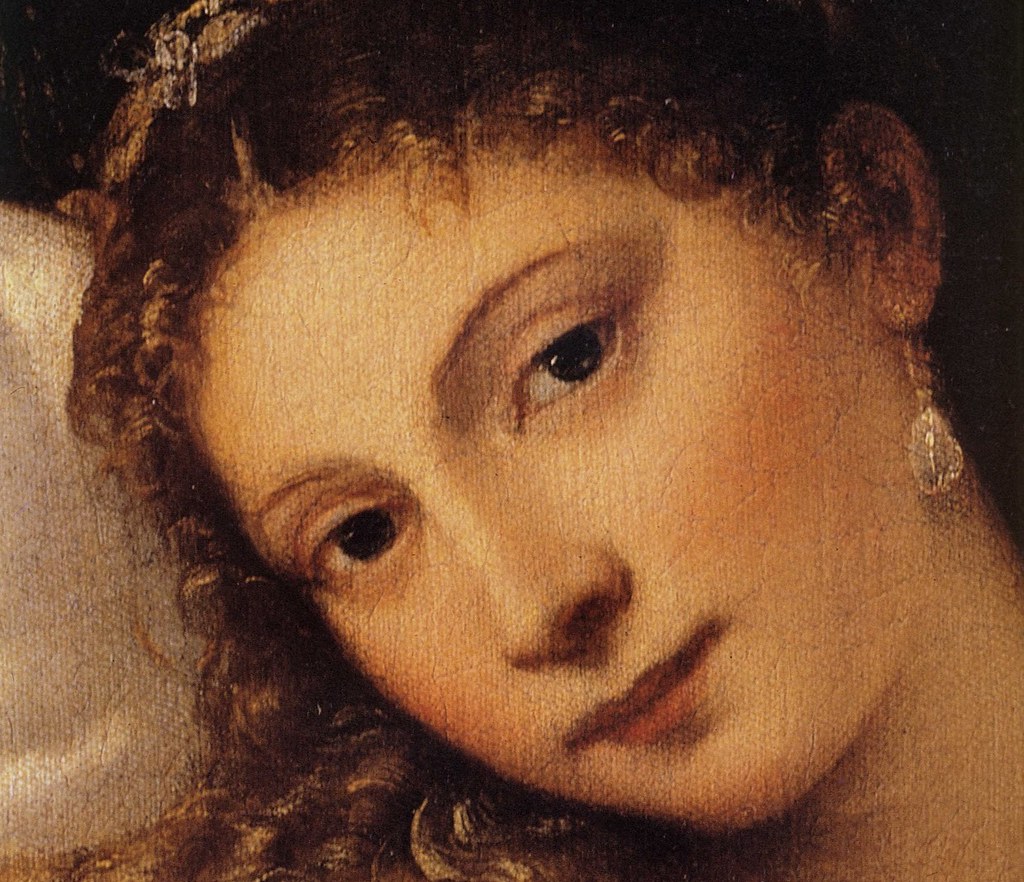
Venus of Urbino
* Titian
* 1528
* Late renaissance
* oil on canvas
* direct observation of nature
* two servant women in the background
* dogs are used as a symbol of faith in a marriage
* flowers are alluding to a wedding ceremony
* hairsttyle is typical for engaged women in the Renaissance
* Commissioned by woman’s fiance
* 1528
* Late renaissance
* oil on canvas
* direct observation of nature
* two servant women in the background
* dogs are used as a symbol of faith in a marriage
* flowers are alluding to a wedding ceremony
* hairsttyle is typical for engaged women in the Renaissance
* Commissioned by woman’s fiance